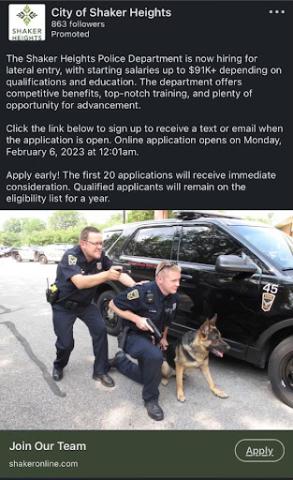March 2023
By Mark Joseph
As our team at NIMC deepens our work with partners to explore and advance antiracist approaches to housing and community development, I will be sharing some reflections in our newsletter about my own evolving perspectives and journey. This is also an opportunity to share and deploy my working framework for applying a racial equity and racial justice lens.
I join with many of our colleagues in the antiracism space in defining racial equity and racial justice as two related but very different concepts. As some of you have heard me describe, if racial equity is Antiracism 1.0, then racial justice could be considered something more like Antiracism 5.0, it is that much more profound and demanding of a threshold for social change. Differently put, racial equity is necessary but not sufficient to achieve racial justice. We can think of racial equity as “making it even” while we can think of racial justice as “making it right.” Both are complex, monumental societal endeavors and both require high clarity of purpose and intentionality in order to make meaningful individual, collective and systemic progress. And those of us seeking to practice everyday antiracism must have a clear sense of how to help advance each one.
When putting it into practice, both concepts can be broken down into four actionable elements. Racial equity, for me, can be sought through a focus on curiosity, structure, perception and belonging. To “make it even” we must approach issues of race with a willingness to explore and learn, we must identify systemic root causes of inequities, we must reveal and shift our mental models, and we must eliminate othering and promote inclusion. Racial justice, for me, can be sought through a focus on truth, healing, restitution and power. To “make it right” we must name and accept often ugly realities about our past, present and future, we must acknowledge and address harm and trauma, we must compensate those who have been wronged, and we must shift influence and control from the powerful to the vulnerable.
For my first reflection, I’ll share and work through my horror and shame to have recently seen the photo below on a LinkedIn page marketing the Police Department in the city of Shaker Heights. This is the community where my children have all gone to school for the past 16 years and where my wife and I have joined with so many others to push for meaningful change. The marketing photo appeared just days after the devastatingly brutal and cruel killing of Tyre Nichols by a special police task force in Memphis, and it was accompanied by an even more horrifying video of militaristic gear and tank like videos on the city’s police website. This says plenty about the shortcomings in our antiracism efforts in a city that is the subject of a forthcoming book Dream Town: Shaker Heights and the Quest for Racial Equity by Washington Post journalist Laura Meckler.
So let’s apply our racial equity and racial justice lens.
Curiosity: What vital questions were not asked by the people responsible for taking, selecting and disseminating this photo? (Again, keep mind an entire video was also made and posted exacerbating these themes.)
Structure: What is it about the recruitment system for police in Shaker Heights that leads to a photo such as this to appear to everyone who approved its use to see it as an effective and affirming way to market the police force? Who holds decision-making power (and who doesn’t)?
Perception: What mental models about policing are at play in the minds of those who approved this photo? And did anyone consider how this photo would be perceived by the 35 percent African American residents “served and protected” by this city’s police force, let alone most others horrified by the endless anti-Black violence perpetuated by police across this country?
Belonging: Who would be attracted to serve in a police force represented by this photo? And who would be othered and excluded from recruitment by a photo like this?
Ok, maybe those questions could help Shaker Heights to “make it even,” to devise a more equitable way to recruit and staff their police force. Now, what if Shaker Heights wanted to “make it right”?
Truth: What are the ugly truths about the history of police forces in America – their origins as slave patrols during the early 1700s? I invite you to exercise your racial equity curiosity and check out Harvard historian Jill Lepore’s New Yorker piece on the Invention of the Police. Can we be honest that this Shaker Heights recruitment photo was not an “oops” but traces a long history of police as protectors of White property and well-being?
Healing: Who was harmed by this photo and in what ways? Has any apology been offered by the Police Department or the City for this offensive marketing? Does the Police Department or City realize, or care about, the harm that has been caused? No awareness, no healing.
Restitution: What could be done to compensate those previously marginalized by the police force’s recruitment approach? Clearly the marketing approach suggests a recruitment priority and pattern. What special investment could be made in recruitment and training of African Americans in order to make up for previous exclusion?
Power: How could decision-making and influence be shifted into the hands of citizens to help avoid future “mistakes” like this? For those of you who would like to take a small action on this issue, there is actually a student-driven public safety reforms ballot initiative currently being formed to address systemic racial bias in policing in Shaker Heights, as evidenced by 71% of police traffic tickets going to the African American 35% of the population. You can donate start-up funds here.
To the Shaker Heights mayor’s credit, he had the photo and video pulled down as soon as community members brought their concerns to his attention. In his communication with me, he readily agreed that the images were not consistent with the message that the City wants to convey about its police force, nor were they consistent with the City and community’s shared values. But, as I would say to him if we were to discuss this in any detail, Shaker Heights has been on a high profile and hard-fought journey toward racial integration, awareness and equity for well over 60 years. What does it tell us that this marketing was used here? And what meaningful actions will flow from this, if any, besides removal of the images?
Remain vigilant friends. And stay the course, despite the dispiriting setbacks that will persist. Continue to plant seeds of awareness and intentionality, you never know what will grow from your efforts.
Mark is the Founding Director of NIMC and the Leona Bevis and Marguerite Haynam Professor of Community Development at the Jack, Joseph and Morton Mandel School of Applied Social Sciences at Case Western Reserve University



